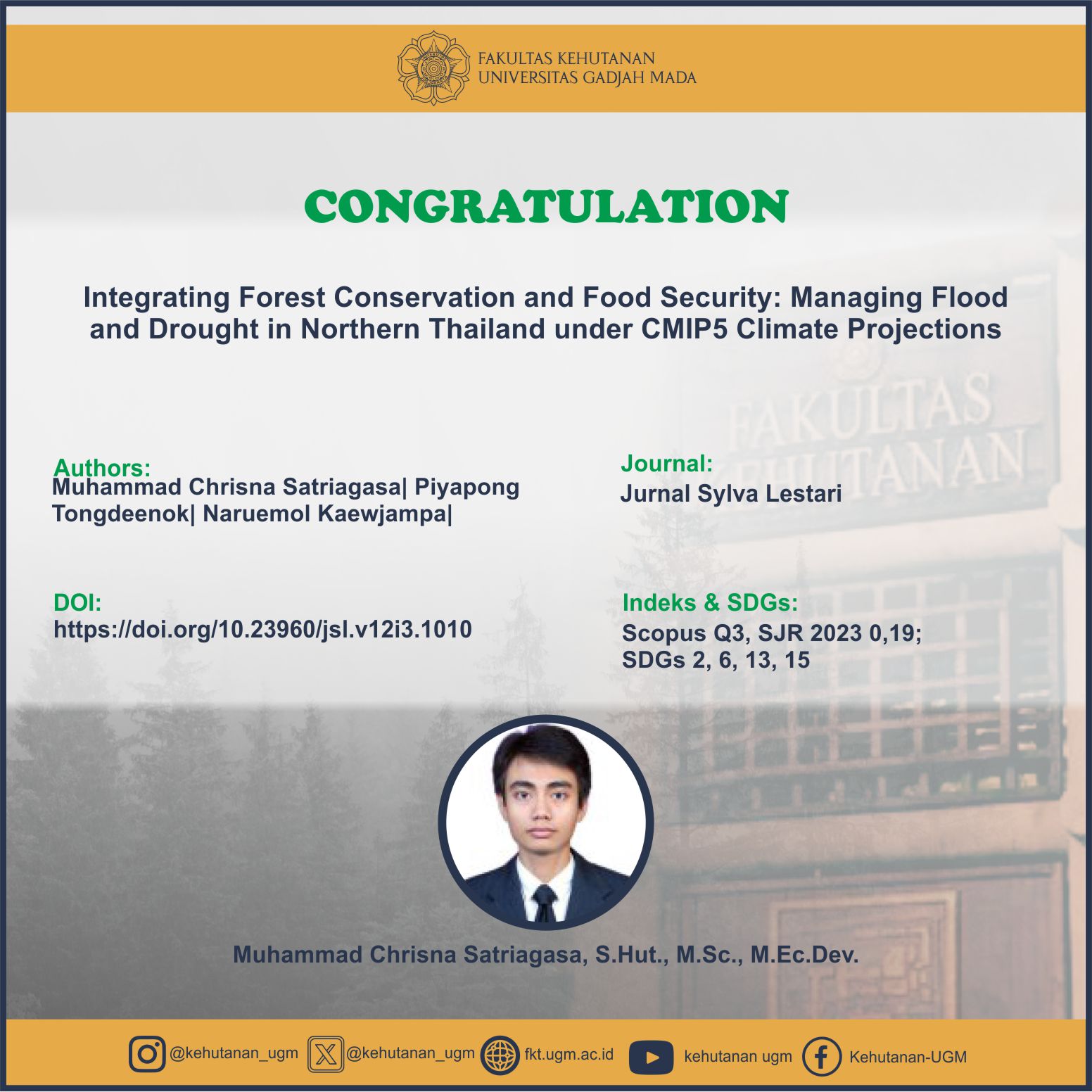
Abstract
Increasing food demand and climate change-induced natural disasters pose significant challenges to food security. This study examines how forest conservation can mitigate disaster risks to agricultural land in Northern Thailand’s watershed. The Soil and Water Assessment Tool (SWAT) and Hydrologic Engineering Center’s-River Analysis System (HEC-RAS) models were used to assess flood impacts, while the standardized precipitation and evapotranspiration index (SPEI), vegetation health index (VHI), and standardized streamflow index (SSI) evaluated drought impacts, incorporating two Coupled Model Intercomparison Project Phase 5 (CMIP5) climate projections and five land-use scenarios. Historical data shows drought causing more yield loss than floods for rice and maize, a trend expected to continue. Under future Representative Concentration Pathways (RCP) 8.5, potential rice yield loss due to drought could reach 1,834 tons and maize yield loss 7,702 tons. Flood-induced losses are lower, with potential rice yield loss at 26.2 tons and maize at 16.9 tons. Reforestation can reduce these losses by up to 25% for drought and 20% for floods. Maintaining forests in mountainous and upstream watershed areas is essential to ensure food security. Policymakers should prioritize conserving these critical areas for effective water regulation and disaster risk reduction. Forests in these areas play a crucial role in regulating water flow, reducing runoff, and enhancing soil moisture retention, which is vital for mitigating the impacts of extreme weather events on agriculture.
SDGs:
SDG 2: Zero Hunger
SDG 6: Climate Action
SDG 13: Life on Land
SDG 15: Clean Water and Sanitation
Link Dokumen:
Download
